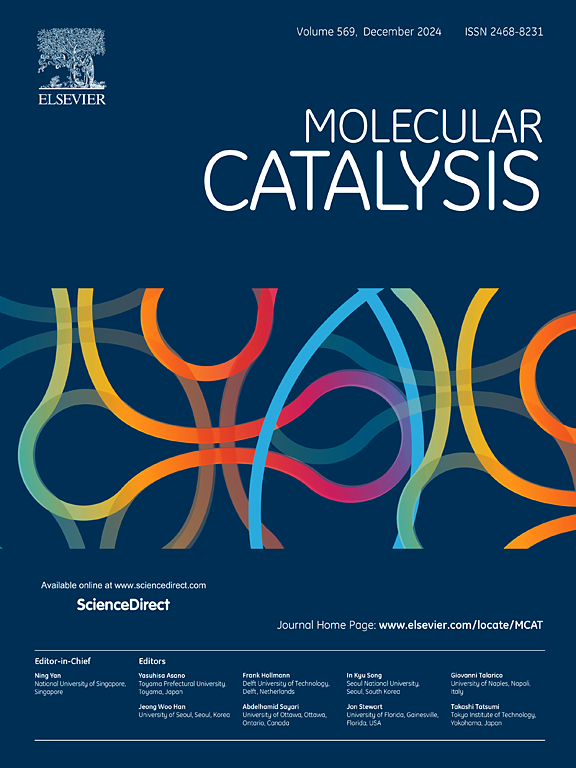Impact of 3d-metals on M-Pt@Cu dual-atom alloy for CO2 electroreduction: Scaling descriptors
IF 3.9
2区 化学
Q2 CHEMISTRY, PHYSICAL
引用次数: 0
Abstract
Effectively reduce CO2 to high-value chemicals is a crucial approach to achieving carbon neutrality. Herein, we utilized density functional theory (DFT) calculations to screen out a series of dual-atom alloys (DAAs) M-Pt@Cu, involving transition metal (TM), Pt-co-loaded on the surface of Cu(111), for electrochemical CO2 reduction (eCO2RR). Concerning the electronic properties of 3d TMs (e.g. Sc, Ti, V, Cr, Mn, Fe, Co, Ni, and Zn), the dependence of the activation of *CO2 and the adsorption energy of *H on the number of valence electrons shows a volcano-like relationship, shedding light on V-Pt@Cu suppressing hydrogen evolution reaction (HER) and promoting eCO2RR. Specially, the free energy calculation results reveal that V-Pt@Cu significantly inhibits the HER and directs eCO2RR towards the C2 product, CH3CH3. Subsequently, catalytic simulation results under external potential demonstrated that regardless of the pH value, CH3CH3 always requires a more positive potential than CH4, suggesting that products are always produced toward CH3CH3 under the wide pH range. Utilizing the sure independence screening and sparsifying operation (SISSO) method, electronic descriptors have been screened out to identify the activation degree of CO2 and H adsorption of M-Pt@Cu. These descriptors are closely related to the valence electron number, atomic mass, first ionization energy, and electronegativity of TM. Furthermore, the correlation analysis of these descriptors validated that the V-Pt@Cu system is a favorable catalyst for eCO2RR. The results of this study provide a new perspective for the electrocatalysis of CO2 in DAAs and facilitate the rational design of effective eCO2RR electrocatalysts.

求助全文
约1分钟内获得全文
求助全文
来源期刊

Molecular Catalysis
Chemical Engineering-Process Chemistry and Technology
CiteScore
6.90
自引率
10.90%
发文量
700
审稿时长
40 days
期刊介绍:
Molecular Catalysis publishes full papers that are original, rigorous, and scholarly contributions examining the molecular and atomic aspects of catalytic activation and reaction mechanisms. The fields covered are:
Heterogeneous catalysis including immobilized molecular catalysts
Homogeneous catalysis including organocatalysis, organometallic catalysis and biocatalysis
Photo- and electrochemistry
Theoretical aspects of catalysis analyzed by computational methods
 求助内容:
求助内容: 应助结果提醒方式:
应助结果提醒方式:


